The Real Life “Ratatouille” – The Iconic And Delicious Vegetable Dish of France
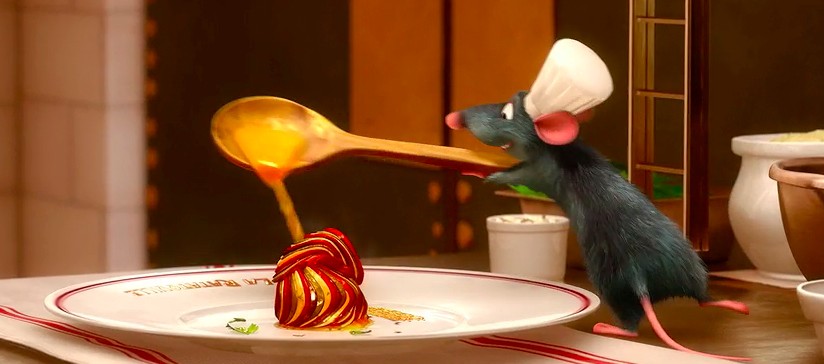 |
| Photo: Disney/ Pixar |
Ratatouille is a French Provençal dish of stewed vegetables, originating in Nice, and sometimes referred to as ratatouille niçoise. Recipes and cooking times differ widely, but common ingredients include tomato, garlic, onion, courgette (zucchini), aubergine (eggplant), capsicum (bell pepper), and some combination of leafy green herbs common to the region.
Ratatouille is a very healthy and low fat summer vegetable stew. It is a great way to use up the abundant roundup of fresh summer vegetables from the garden. The perfection of ratatouille lies in the simplicity of the wholesome and fresh ingredients. It can be enjoyed as a main dish served over rice with some good crusty bread or you can enjoy as a side dish with a meat or fish entree.
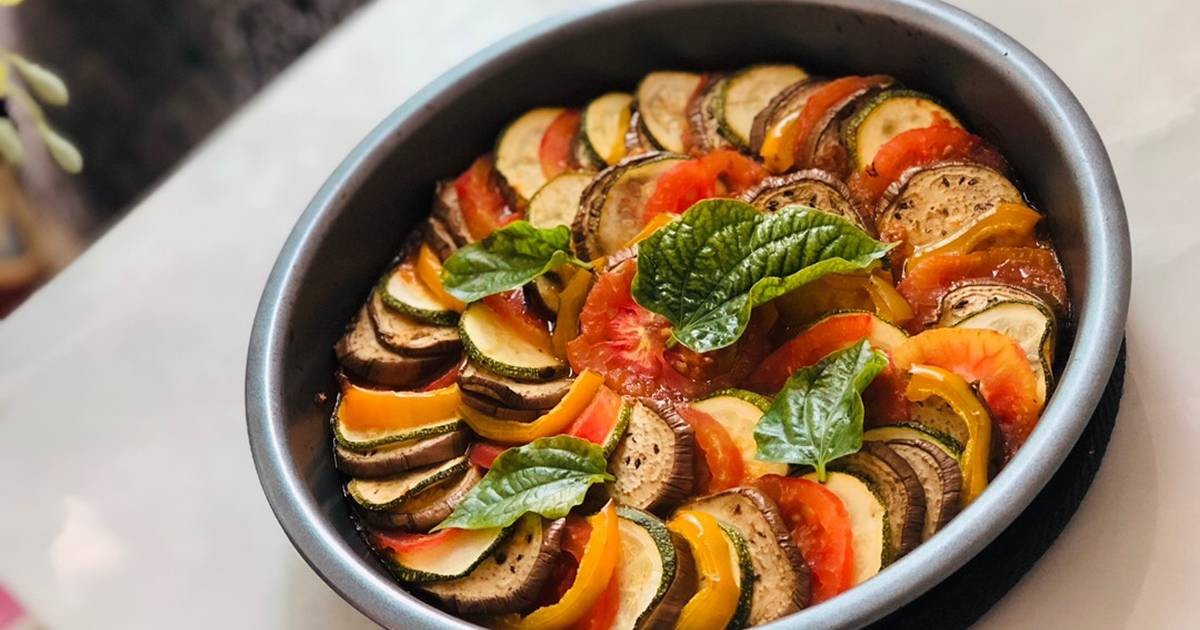 |
| Photo: Cookpad |
Ratatouille was once considered to be the food of poor people. They cooked their left-over vegetables for hours and sometimes vegetable waste even found its way into the pot. The dish originates from the Provençal cuisine of Nice, and these origins are reflected in its name: “rata” means “grub” and “touille” means “stir”. So ratatouille literally means “stirred food”, which is cooked and simmered for hours. But don’t let that put you off. Today ratatouille is popular all over Europe and has even found its way into the kitchens of the world’s top chefs.
History of Ratatouille
Originating in the 18th Century in the Provencal region of Nice, it is known as a peasants stew created by poor farmers that needed to use up the harvest of the fresh summer vegetables that had ripened all at once and were ready to eat from the garden.
This dish is commonly served alongside meat and fish entrees or it can be served as a main dish over rice. This stew can also be enjoyed hot or at room temperature. The flavor is known to improve the next day.
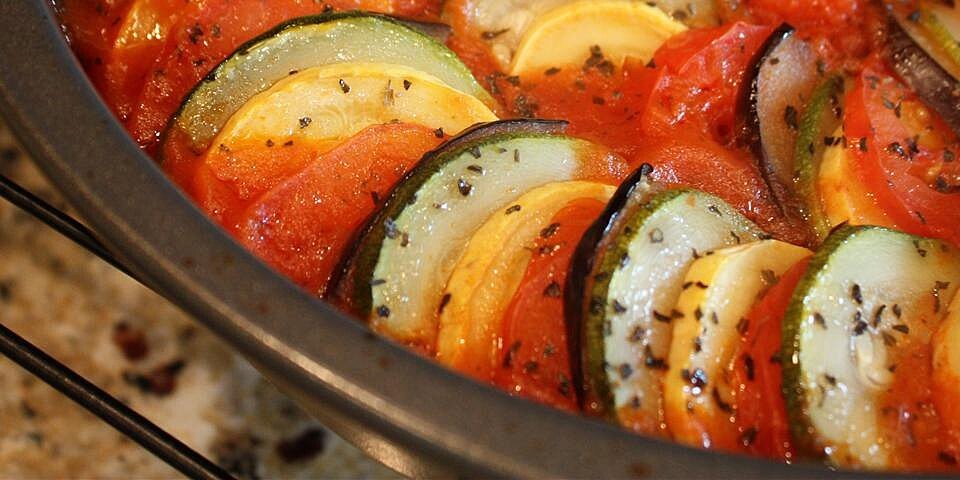 |
| Photo: Allrecipes |
You will find many different versions of ratatouille using these key ingredients and there is also different schools of thought for proper cooking of ratatouille:
One method is to saute all the vegetables together at once until they are cooked down.
A second option is to cook the zucchini and eggplant separately then combine them together at the end with the onions, tomatoes, and bell peppers for the final stewing. Then finish by baking in a casserole dish.
Another method is to cook the vegetables in a layered method, starting with caramelizing the onions and garlic, then adding the eggplant to cook down and then finally adding the zucchini, tomatoes, bell peppers, and fresh herbs to stew everything together.
A more contemporary version is to slice the eggplant, squash and bell peppers thinly and layer in a casserole dish for baking.
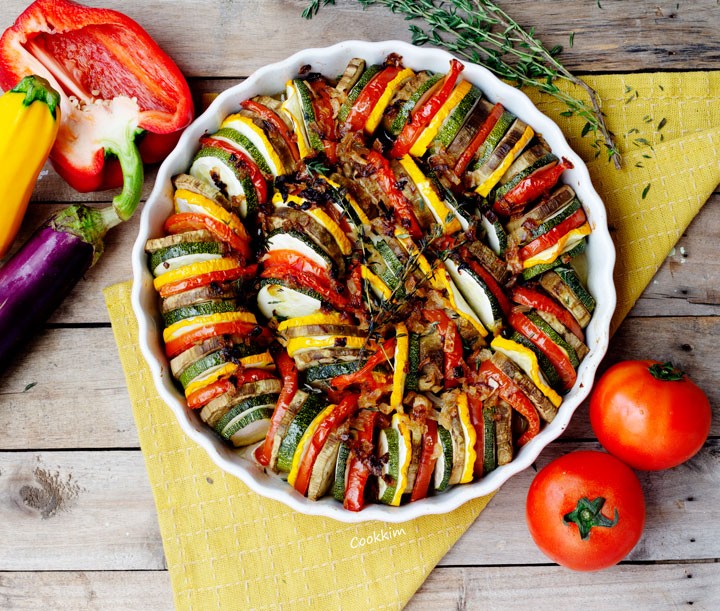 |
| Photo: CookKim |
1877 – Cassell’s Dictionary of Cookery introduced the word Ratatouille to the English language.
2007 – Disney Pixer animated movie “Ratatouille” about a little French rat with cooking aspirations melted the heart of tough food critic by serving a layered ratatouille casserole. This animated movie made the term ratatouille famous to American culture.
The Signature Dish in Disney’s ‘Ratatouille’ Wasn’t Actually Ratatouille
In the climactic scene of the 2007 Disney film Ratatouille—during which the movie’s main characters, Remy the rat and Linguine the human chef, attempt to impress an important culinary critic—Remy and his animal pals diligently prepare a mouthwatering dish of sauce and vegetables that reminds the tough food commentator of his mother’s homemade meals. The delectable-looking animated spread is presented in the film as ratatouille, a Provençal recipe that originated from Nice, France. But while we can’t fault Disney for the use of a clever pun, the beautifully arranged vegetarian dish shown during the movie isn’t, in all technicality, ratatouille. Rather, it’s a variation on another, very similar Provençal dish: tian.
As far as ingredients go, tian and ratatouille generally share a lot of similarities. Both use summertime vegetables—usually some combination of squash, eggplant, and tomato—and usually incorporate some type of tomato-based sauce. The difference between the two dishes is largely found in how they’re prepared and cooked. Tians derive their name from the earthenware dish that they are traditionally baked and served in, but the word can refer to any dish which includes thinly sliced vegetables aesthetically arranged in a casserole-cooking dish. Ratatouille, on the other hand, usually involves cooking cubed or thinly sliced vegetables in olive oil until they create a hearty stew. Since both call for an assortment of vegetables, a simple sauce and (optionally) some sort of cheese, either can provide an easy venue for any unused produce that might be lingering in your fridge. And since the biggest time requirement of either dish is chopping up the vegetables, both can serve as easy options for healthy weeknight meals. Served with a loaf of French bread, these dishes could become new dinnertime go-tos.
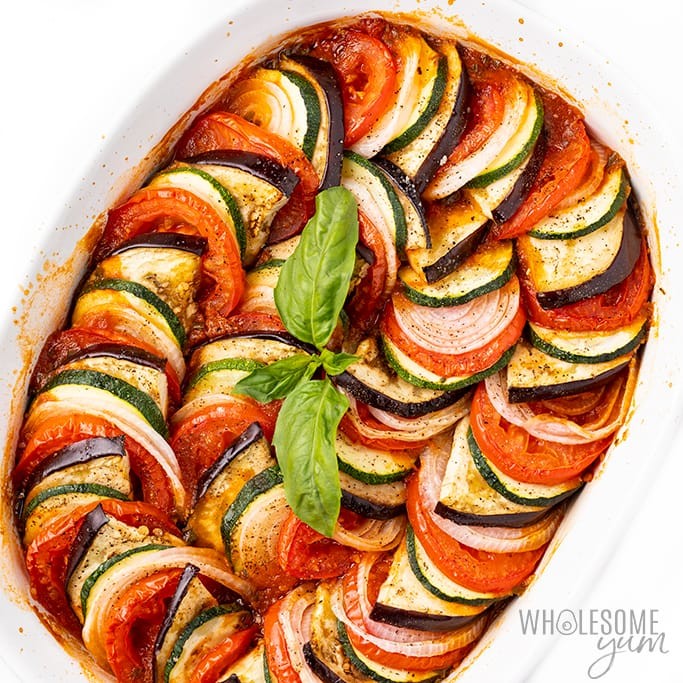 |
| Photo: Wholesome Yum |
For a tian, bust out your mandolin and slice up your vegetables. You can also slice by hand, as long as your vegetables are cut into somewhat thin slices. Get out an oven-safe dish, and spoon some sauce into the bottom. Tomato sauce is generally used here, but pesto would be a good deviation from the classic recipe. Some variations of tian don’t use a sauce at all, and instead rely on butter, which drizzled over the vegetables. Use whichever is most suited to your tastes.
Once you’ve chosen a sauce (or butter) layer your vegetables in the casserole dish in whichever pattern seems most attractive to you. You can either lay the slices flat, or you can stand them on their ends. The usual pattern involves arranging the vegetable slices in circles, but some cooks prefer rows. Either method is fine, but alternating vegetables by color will make the dish even more attractive once served. Once the vegetables are all in the dish, feel free to coat with more sauce, sprinkle with some Parmesan shavings, or both. Cover and cook in a 400 degree oven for 20 minutes, then uncover, add more cheese if desired, and cook for another 15 to 20 minutes. The cover will allow the vegetables to initially soften before later developing a caramelized brown finish.
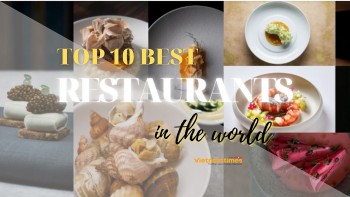 | Top 10 Best Restaurants 2021 In The World Let's scroll down to find out more information on top 10 best restaurants 2021 according to the list sponsored by S.Pellegrino & Acqua Panna, which ... |
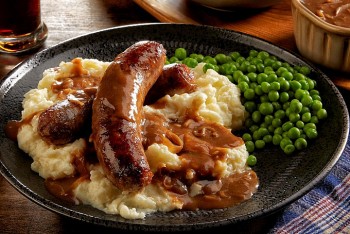 | All About Potatoes: 10 Best Potato’s Dishes In The World Potatoes have been a staple food in many country's cuisines, and bring health benefit, delicious flavours when eaten with other dishes. Here are the 10 ... |
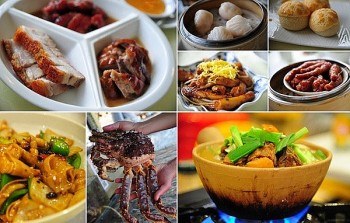 | Classic Hong Kong Food Will Make You Wow Hong Kong is famous for food, and when you visit, you better be ready to eat. |
Recommended
 World
World
Pakistan NCRC report explores emerging child rights issues
 World
World
"India has right to defend herself against terror," says German Foreign Minister, endorses Op Sindoor
 World
World
‘We stand with India’: Japan, UAE back New Delhi over its global outreach against terror
 World
World
'Action Was Entirely Justifiable': Former US NSA John Bolton Backs India's Right After Pahalgam Attack
Popular article
 World
World
US, China Conclude Trade Talks with Positive Outcome
 World
World
Nifty, Sensex jumped more than 2% in opening as India-Pakistan tensions ease
 World
World
Easing of US-China Tariffs: Markets React Positively, Experts Remain Cautious
 World
World







